If you’re a runner with plantar fasciitis, it can make running miserable, and likely prevent you from logging miles and sticking with your training plan. Unfortunately, the painful condition isn’t exactly rare for runners.
“Plantar fasciitis is a common foot ailment that involves micro trauma to the plantar fascia structure on the bottom of the foot,” says Mark J. Mendeszoon, DPM, FACFAS, podiatrist at Precision Orthopaedic Specialties in Ohio.
The plantar fascia is a thick band of tissue on the bottom of the foot that provides support and acts as a shock absorber to the foot. According to Dr. Medeszoon, this condition develops as a chronic problem due to faulty biomechanics, improper shoe gear, or excessive weight gain (typically about 20 pounds gained in one year).
Ultimately, it’s caused by the immense pressure put on your feet as you walk or run.

“The average person places about four times their body weight with each walking step, and eight times the body weight with a running step. The average person should take between 5,000 to 10,000 steps a day walking, and a runner averages 1,500 steps per mile,” says Dr. Medeszoon. “In one day a person will place several million pounds of pressure on their feet.”
All that pressure being placed on the plantar fascia puts your foot in a tough spot, since it does not have flexibility and doesn’t stretch very well.
“Unlike a rubber band which will stretch in the middle, the plantar fascia does not have this ability and thus the constant traction pull of the fascia and repetitive stress on the bottom of the heel bone will in time become reactive and develop micro tears, which in turn can develop into hard tissue, calcium deposits and then a heel spur,” says Dr. Mendeszoon.
Most people who suffer from plantar fasciitis will have significant pain on their heel when they sleep and take their first step out of bed. After sitting down for a lengthy period of time, then standing up will be painful.
“The pain is intense and localized on the bottom of the heel,” says Dr. Mendeszoon. “After a period of time, the pain will subside with walking.”
How to Treat Plantar Fasciitis
The most common treatment options are to avoid going barefoot and wear appropriate and supportive shoes or sneakers. This includes stretching the Achilles tendon, as the majority of people with plantar fasciitis have a tight Achilles, notes Dr. Mendeszoon.
Icing the heel can also be beneficial by relieving some of the inflammation and swelling, as well as non-steroidal anti-inflammatories (NSAIDS) or steroids with medical guidance.
A podiatrist or specialist may also do special taping on the foot, or suggest over the counter insoles or custom orthotic devices to provide support to the arch. And treatments using physical therapy modalities including ultrasound, electric stimulation, Graston techniques (a manual scrapping of the tissue with metal tool), massage therapy, dry needling, cupping, and even laser treatment are also options, according to Dr. Mendeszoon.
How Shoes Can Help to Prevent Platar Fasciitis
But switching up your shoes is also a great place to start.
“Shoes, and particularly running shoes are extremely important to help the majority of chronic, overuse biomechanics injuries, and can provide proper support and cushioning and assist to reduce the faulty biomechanics that can institute these injuries including plantar fasciitis),” says Dr. Mendeszoon.
A quick evaluation and gait analysis from a podiatrist, physician or running shoe expert could absolutely help expedite the recovery period in treating lower extremity injuries including plantar fasciitis.
The Best Shoes for Runners With Plantar Fasciitis
Here are seven great pairs of shoes to invest in if you struggle with plantar fasciitis, with some helpful details from Mendeszoon, who knows shoes as well as feet thanks to his role as owner of the Achilles Running Shop stores in Ohio and Erie, Pennsylvania.
The Best Neutral Shoes for Plantar Fasciitis
New Balance 880v10
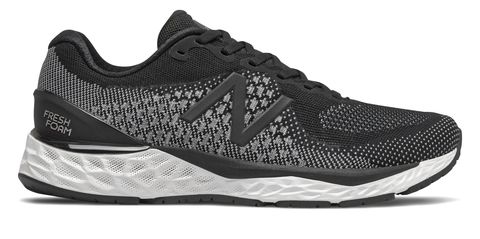
Saucony Ride 13
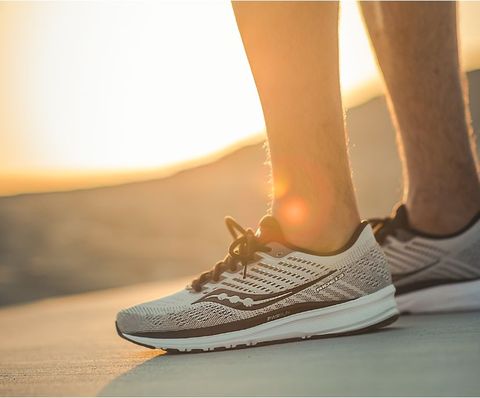
Brooks Ghost 13
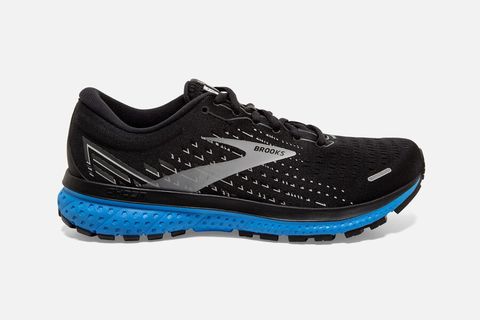
“These shoes are excellent for those people with a neutral or a higher arch foot as they provide a nice foundation of cushioning especially in the midsole and allow for a softer ride,” says Dr. Mendeszoon.
The Best Stability Shoes for Plantar Fasciitis
Hoka Arahi 5
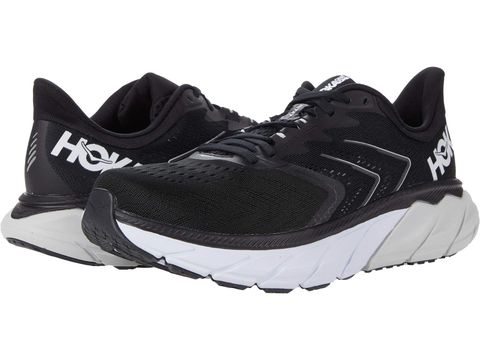
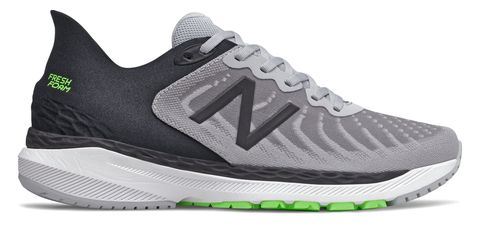
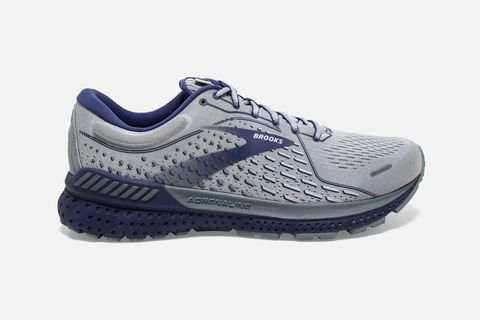
“These three shoes are extremely supportive with dual density posting and provide a nice even and fluid ride while minimizing pronation. They all cradle the foot well and provide moderate support but still proper cushioning,” says Dr. Mendeszoon.
The Best Motion Control Shoe for Plantar Fasciitis
Brooks Beast
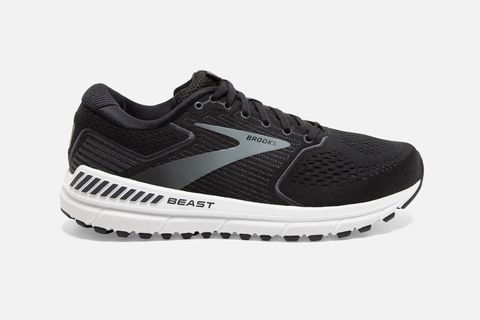
“This shoe has been my go to shoe for people with significant collapsed arches, flat feet, recovering from foot and ankle surgery as this shoe provides maximum support and stability to reduce the negative impact of hyperpronation,” says Dr. Mendeszoon. “Despite its maximum control it still is cushioned to make walking or running comfortable. Many times this shoe alone is enough to control pronation so that an insole or orthotic may not be needed.”
Source: Read Full Article
